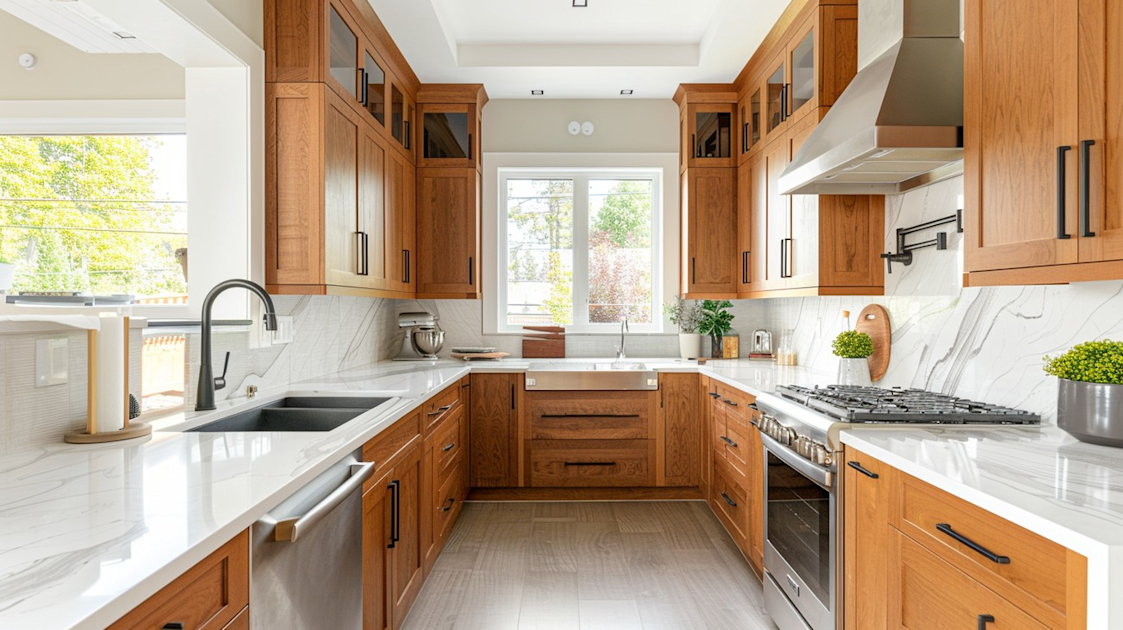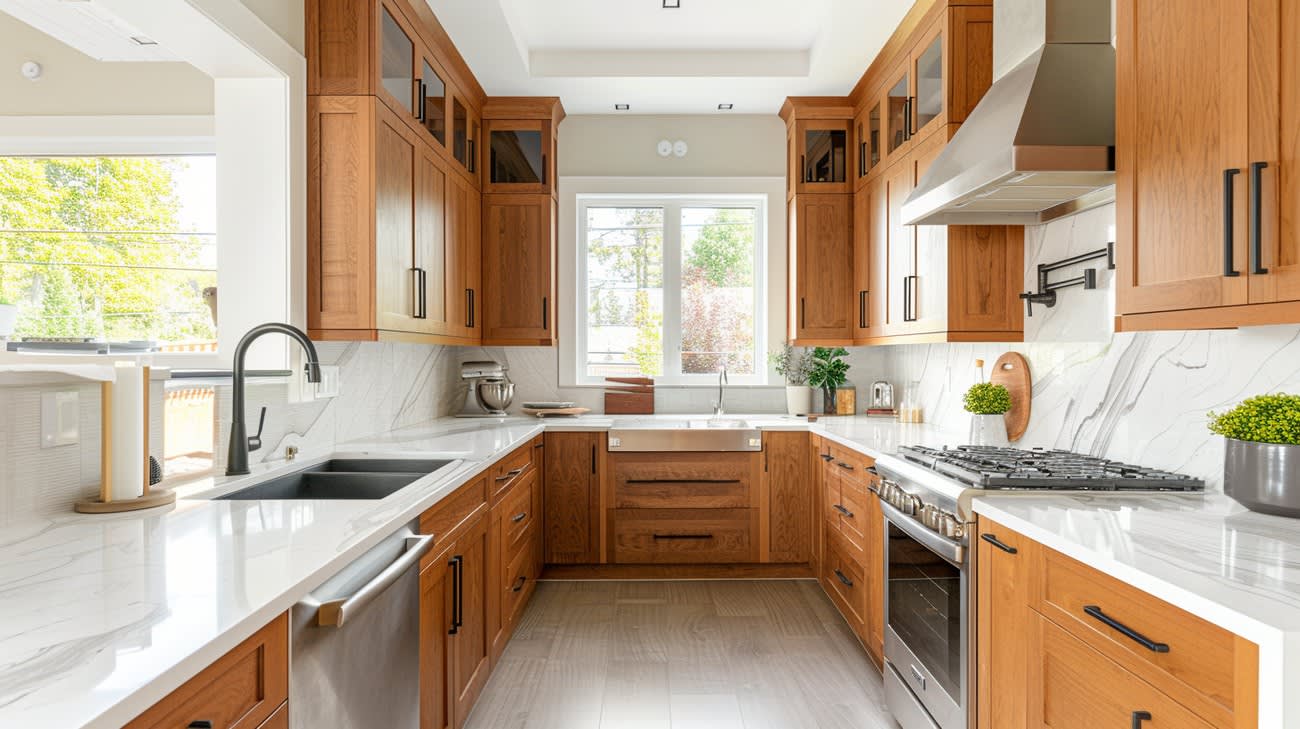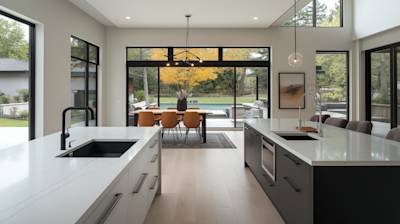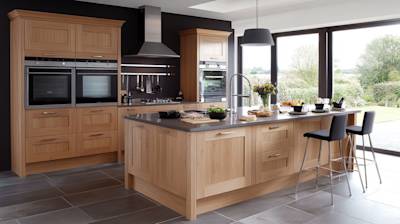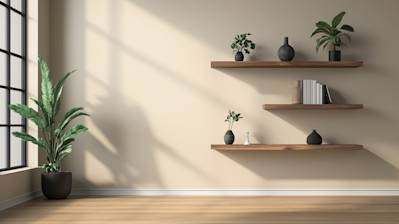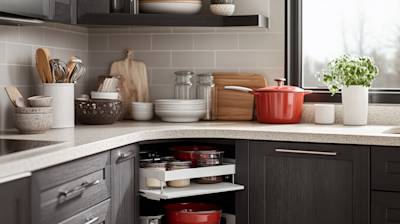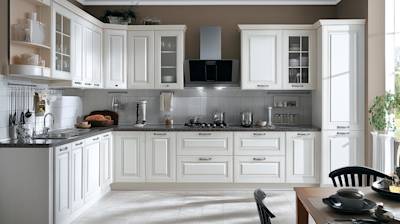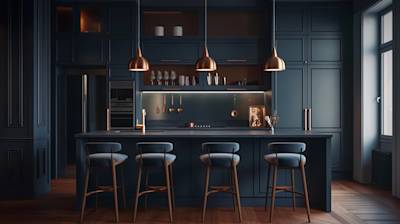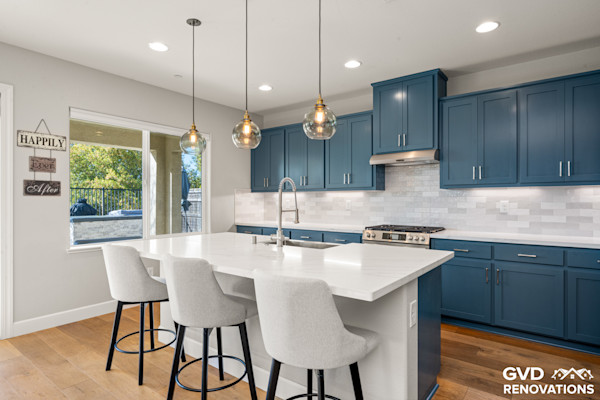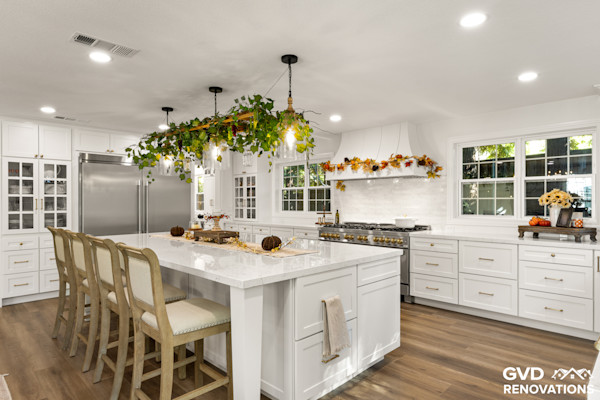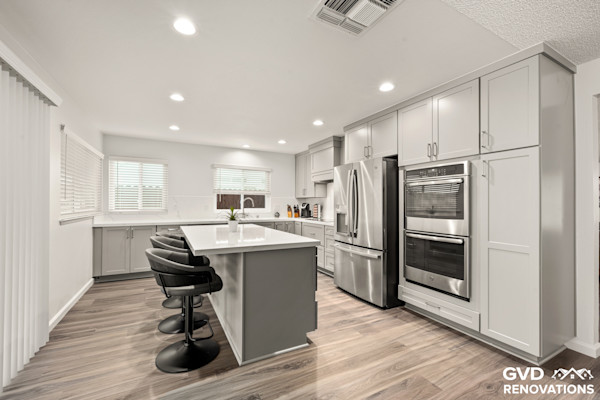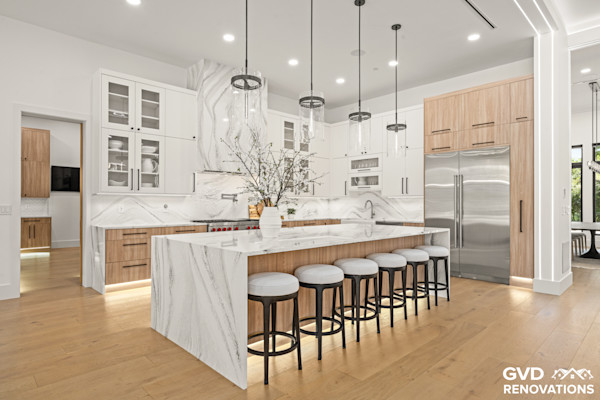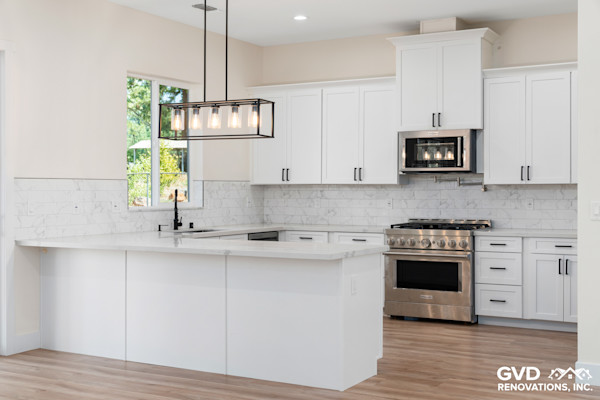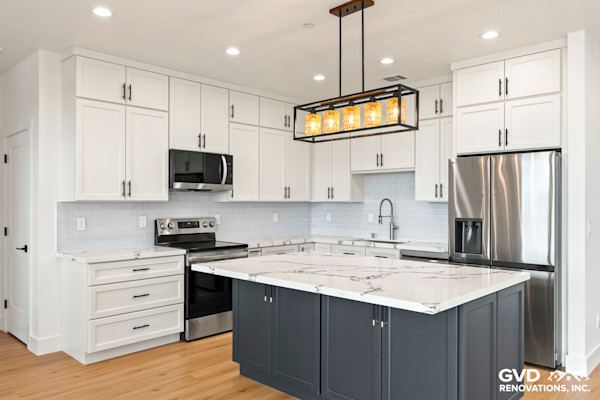As homeowners look to update their kitchens without undergoing a full renovation, kitchen cabinet refinishing has emerged as a cost-effective and rewarding option. This process not only enhances your kitchen's aesthetic appeal but also adds value to your home. Whether you're new to the concept or considering tackling the refinishing process as a DIY project, this guide will walk you through the essentials of kitchen cabinet refinishing.
What is Kitchen Cabinet Refinishing?
Kitchen cabinet refinishing involves refreshing the cabinets' appearance by applying new finishes or restoration techniques, without replacing the existing structures. This method conserves resources and reduces waste, as it focuses on enhancing what’s already in place, rather than discarding old cabinets for new ones.
Benefits of Refinishing Cabinets
Refinishing offers several advantages over a full cabinet replacement:
- Cost-Effective: Refinishing is significantly more affordable than purchasing new cabinets.
- Time-Saving: The process is quicker than a complete remodel, often completing in just a few days.
- Customizable: Homeowners can choose from a myriad of finishes and colors to suit their personal style.
Choosing the Right Finish
Selecting the right finish is crucial for achieving the desired look and ensuring durability. Here are some popular finish options:
Paint
Using paint can completely transform cabinets, offering a fresh and modern look.
- Variety: Available in endless colors.
- Protective Qualities: Provides a layer that guards against scratches and moisture.
Stain
Stains enhance the natural charm of wooden cabinetry and highlight the wood grain.
- Natural Beauty: Accentuates wood textures and hues.
- Versatility: Offers various shades, from light to dark, to complement kitchen decor.
Glaze
A glaze can add depth and character to cabinets, giving them an antique, elegant look.
- Detail Highlight: Enhances detail in woodwork and moldings.
- Unique Finish: Offers a one-of-a-kind appearance, perfect for traditional styles.
Essential Steps in Kitchen Cabinet Refinishing
Refinishing cabinets involves several key steps to ensure a professional finish.
Prepare Your Cabinets
Preparation is crucial to the success of any refinishing project.
- Remove Doors and Hardware: Label each door and corresponding hardware to ensure easy reinstallation.
- Clean Thoroughly: Remove dirt, grease, and residue using a cleaner like Trisodium Phosphate (TSP).
- Sand the Surfaces: Lightly sand to remove old finishes and to help the new finish adhere better.
Choosing the Right Tools
Having the appropriate tools simplifies the refinishing process and enhances results.
- Sanding Blocks & Electric Sander: Essential for preparing surfaces.
- Paint Sprayer or Brushes: For applying finishes evenly.
- Drop Cloths and Painter’s Tape: Protects surroundings and helps achieve neat edges.
Application Process
Now it’s time to apply your chosen finish carefully and methodically.
- Prime the Surfaces: Ensure a smooth base for paint or staining, especially for previously painted cabinets.
- Apply the Finish: Use long, even strokes or a sprayer for a smooth application. Allow ample drying time between coats.
- Seal the Finish: Applying a sealant helps to protect the finish and extend its life.
Maintenance Tips for Refinished Cabinets
Keeping your newly refinished cabinets looking pristine requires diligent care.
- Regular Cleaning: Wipe down surfaces with a damp cloth to remove dust and spills.
- Avoid Harsh Chemicals: Use gentle cleaning solutions to preserve the finish.
- Check and Re-tighten Hardware: Periodically ensure hinges and knobs are secure to prevent damage.
Enhancing Kitchen Design through Refinishing
Refinishing your cabinets provides an excellent opportunity to rethink your kitchen’s design. Consider these additional design elements:
- Add New Hardware: Fresh door handles or knobs can drastically modernize the look.
- Incorporate Lighting: Interior or under-cabinet lighting can create ambiance and improve functionality.
- Contrast Colors: Use contrasting colors on an island or lower cabinets to add visual interest.
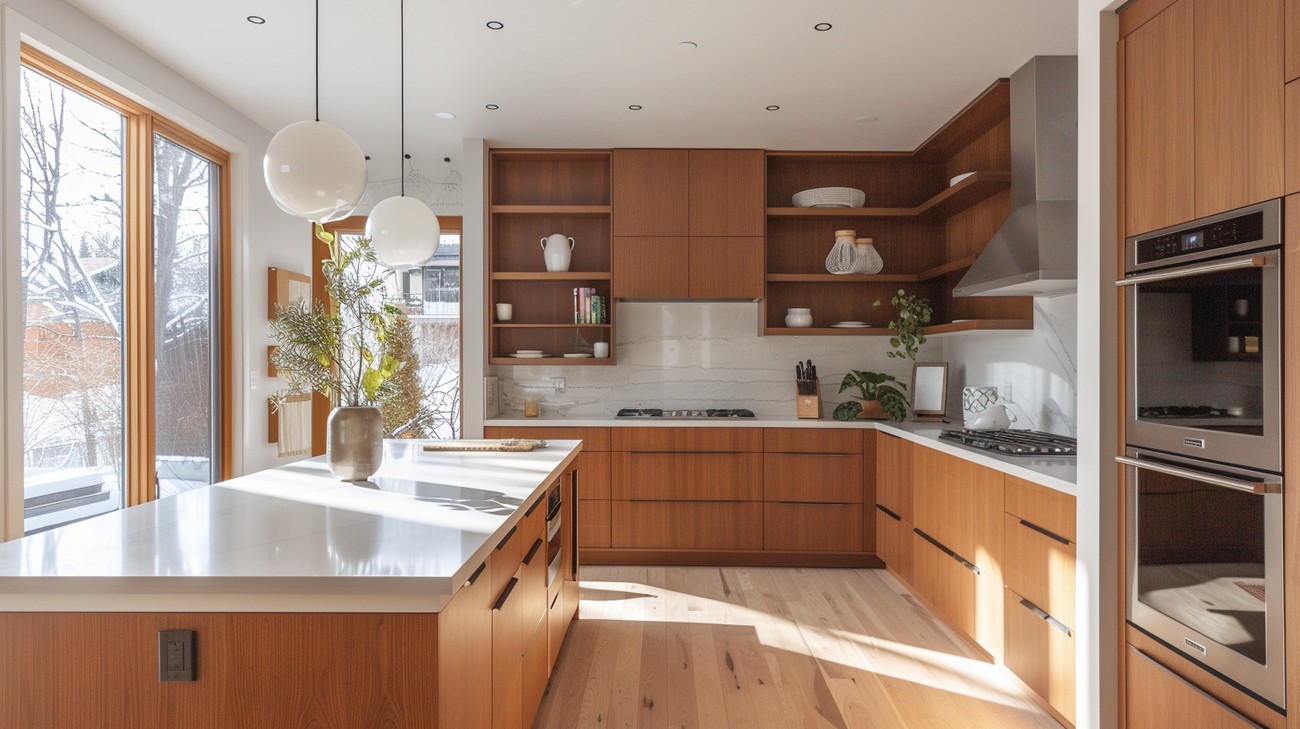
Kitchen Cabinet Refinishing FAQ
How long does kitchen cabinet refinishing take?
The duration of a kitchen cabinet refinishing project largely depends on the size of your kitchen and the condition of your cabinets. Generally, the process can take anywhere from a few days to a week. If you’re choosing to do it yourself, it might extend beyond this timeline depending on your available time and experience. However, professional refinishing can usually complete the job more swiftly, often transforming your kitchen within a week. Patience is key, as multiple steps like removing existing finish, sanding, applying new stain or paint, and allowing each layer to dry properly are essential for a lasting result.
What are the benefits of refinishing kitchen cabinets instead of replacing them?
Refinishing your kitchen cabinets rather than replacing them offers several benefits. Firstly, it's significantly more cost-effective. Replacing cabinets can become a large financial investment, especially when considering labor, materials, and potential structural changes. On the other hand, cabinet refinishing is a fraction of the cost while still refreshing your kitchen’s look. Additionally, refinishing is more environmentally friendly. By opting to refinish, you reduce waste and limit the use of new materials. Another benefit is the dramatic improvement in the aesthetic of your space, giving your kitchen a fresh, updated look without the hassle of a full renovation.
Can all types of cabinets be refinished?
Most types of kitchen cabinets can indeed be refinished, but the process is most successful on solid wood cabinets. Solid wood is the preferred material as it can endure the sanding and application of new stains or paints effectively. While cabinets made from engineered wood or laminate can also be refinished, they require specific techniques and materials to ensure the new coat adheres well. It’s essential to understand the material of your cabinets before embarking on a refinishing project, and consulting a professional might be wise for non-wood cabinets to avoid any issues.
Is it better to paint or stain refinished cabinets?
Choosing between painting or staining your kitchen cabinets during refinishing depends on your desired aesthetic and the current state of your cabinets. Painting offers a broader range of colors and can provide a complete transformation, ideal for older cabinets that may have surface imperfections. Paint can cover blemishes and provide a smooth finish. Staining, on the other hand, is perfect if you love the natural look of wood and want to enhance the wood grain. Stains penetrate the wood and highlight its natural beauty, which may not be possible with paint. Consider the style of your kitchen and the condition of your cabinets when deciding.
What preparation is required before refinishing kitchen cabinets?
Preparing your kitchen cabinets for refinishing is crucial to ensure a successful outcome. Start by removing all cabinet doors, drawers, and hardware. Label each component to ease reassembly later. Thoroughly clean the surfaces to remove grease, grime, and other residues. This might require a specialized degreaser or a simple mixture of soap and warm water. Once clean, sand the surfaces to ensure they’re even and to help the new finish adhere better. If you’re choosing to paint, applying a primer is often recommended. This preparation process might seem painstaking, but it lays the foundation for a durable and visually appealing finish.
Can I refinish kitchen cabinets myself or should I hire a professional?
Whether you handle the refinishing project yourself or hire a professional largely depends on your skill level, available time, and the project’s complexity. DIY enthusiasts with experience in home projects might find refinishing an enjoyable task with adequate research and tools. However, be prepared for a time commitment and potential challenges, especially if your cabinets are in particularly rough shape or if you're unfamiliar with woodwork. Hiring professionals might cost more upfront but can save you time and ensure the highest quality finish with minimal hassle, as they have the experience and tools necessary for such projects.
How can I choose the right color for my refinished kitchen cabinets?
Selecting the right color for your refinished kitchen cabinets involves considering several factors to ensure it complements your kitchen’s decor. Take into account the current color scheme of your kitchen, including the walls, countertops, and backsplash. Consider how much natural light the space receives; darker colors may make a dim room seem even darker, while lighter colors can brighten up a space. You’ll also want to reflect on your personal style and the mood you want to evoke in your kitchen. Neutrals and whites are classic and timeless, whereas bold colors can make a trendy statement. Sample different finishes and observe them at different times of the day to determine the best choice.
Does kitchen cabinet refinishing increase home value?
Refinishing your kitchen cabinets can potentially increase your home’s value, primarily by enhancing your kitchen’s overall aesthetic and appeal. The kitchen is often a central focus for homebuyers, and a well-done refinishing job can make your kitchen appear more modern and well-maintained. Cost-effective compared to a complete remodel, refinishing can offer a substantial return on investment without the high expense. By choosing updated finishes that appeal to a broad audience, you can also make your home more attractive to potential buyers, increasing its marketability and potentially boosting offers.
Are there any risks associated with kitchen cabinet refinishing?
While kitchen cabinet refinishing is generally a straightforward process, several risks must be managed to ensure success. The key is proper preparation and technique. Inadequate cleaning or sanding might prevent new finishes from adhering properly, leading to peeling or chipping. There is also the risk of damaging the existing cabinet structure if excessive force is used during sanding. Poorly applied finishes can result in visible brush marks or uneven color. It's crucial to follow best practices and, if uncertain, consult professional refinishers. Additionally, precise ventilation and wearing appropriate safety gear will protect against fumes from paints and finishes.
How do I maintain refinished kitchen cabinets?
To keep your refinished kitchen cabinets looking fresh and new, regular maintenance is essential. Start by gently wiping down the surfaces with a soft cloth and a mild detergent mixed with warm water. Avoid abrasive cleaners and scrubbing pads, which can damage the finish. It’s also a good idea to regularly tighten any loose screws on handles and hinges. Address any spills immediately to prevent permanent stains, especially for stained finishes. Every few months, consider applying a quality furniture polish to restore luster and protect the surface. Proper care will extend the life and beauty of your newly refinished cabinets.

Cost Breakdown
Typical Price Ranges
Refinishing kitchen cabinets is a popular way to freshen up your kitchen without the expense and hassle of a complete renovation. Typically, the cost can range anywhere from $500 to $5,000. For most homeowners, you can expect to spend between $1,200 and $3,800 for a professional refinishing service. This cost generally covers sanding down the existing surfaces, applying a new stain or paint, and sealing the surfaces with a protective finish. If you're a DIY enthusiast, you might be able to refinish your cabinets for as little as $200 to $300, though this will largely depend on the type and quality of materials you choose.
Factors That Affect Cost
Several factors can significantly influence the cost of a kitchen cabinet refinishing project:
Size of the Kitchen: Naturally, the more cabinets you have, the more materials and labor will be required, driving up the cost.
Materials: The paint or stain you select can vary widely in price. Premium paints or eco-friendly options often cost more.
Labor: Hiring a skilled professional might cost more upfront but save you time and potentially avoid costly mistakes.
Condition of Cabinets: If your cabinets are in rough shape, requiring extensive repairs or prep work, expect the bill to increase.
Complexity of Design: Cabinets with intricate details or non-standard shapes might need extra labor and materials, adding to the overall cost.
Cost Comparison (Budget vs Premium Options)
Budget-minded homeowners can opt for a DIY approach, spending as little as $200 to $300 on basic supplies and paint from a local home improvement store. While this approach is cost-effective, it requires a significant investment of time and effort, as well as a willingness to take on potential mistakes.
In contrast, premium options involve hiring a professional to handle every aspect of the project, from preparation to final touches. This route will typically cost between $2,500 and $5,000. With the premium option, you’re investing in high-quality materials and the expertise of someone who can deliver flawless results.
Hidden Costs to Consider
As with any home improvement project, there can be hidden costs that catch you off guard. One common surprise is the cost of fixing underlying issues like water damage or warping that might become apparent once you start the refinishing process. Another hidden cost can be the disposal of old materials, which some contractors may charge extra for. Additionally, if your kitchen has non-standard or intricate cabinet designs, you may end up paying more for custom solutions that weren’t part of the initial estimate.
Ways to Save Money
Saving money on kitchen cabinet refinishing is entirely possible with a few smart strategies:

Timeline & Process
Phase 1: Planning & Preparation (1 Week)
What Happens:
Before diving into the hands-on work, spend a week planning your project. This includes choosing a new finish or color, gathering supplies, and setting up a workspace. Consider the type of finish you want—whether it's painting, staining, or varnishing—and select the right products.
Dependencies & Waiting Periods:
Selecting materials might require some time, especially if you’re ordering items online or waiting for supplies to arrive.
Preparation Tips:
- Clear out the cabinets.
- Set up a workspace with drop cloths to protect your floors and countertops.
- Label doors and drawers to avoid confusion later.
Phase 2: Cleaning & Sanding (2-3 Days)
What Happens:
Before any new finish can be applied, all surfaces must be cleaned and sanded. This ensures that the new finish will adhere properly.
Dependencies & Waiting Periods:
The drying time for cleaning solutions and the completion of sanding depend on humidity and the thoroughness of the cleaning.
Preparation Tips:
- Use a degreaser to clean all surfaces thoroughly.
- Sand down the cabinet surfaces to remove old paint or varnish. Be consistent with your sanding to ensure a smooth finish.
- Keep the workspace ventilated during sanding and cleaning.
Phase 3: Priming (1 Day)
What Happens:
Apply a coat of primer to your cabinets. This step is crucial for ensuring that the final finish looks smooth and professional.
Dependencies & Waiting Periods:
Allow adequate drying time for the primer, which can take several hours depending on the product.
Preparation Tips:
- Choose a high-quality primer that matches your finish type (oil-based or water-based).
- Wear a mask to protect from fumes and ensure all areas are covered uniformly.
Phase 4: Painting/Staining (2-4 Days)
What Happens:
Apply your chosen finish to the cabinets. This can include painting, staining, or applying varnish, depending on your preference.
Dependencies & Waiting Periods:
It's essential to allow each coat to dry thoroughly before applying the next. This period could range from a few hours to a full day per coat.
Preparation Tips:
- Apply thin, even coats to achieve a smooth finish.
- Allow each coat to dry as per the manufacturer's guidance.
- Lightly sand between coats if necessary for smoother results.
Phase 5: Curing (5-7 Days)
What Happens:
This phase involves allowing the newly finished cabinets to cure and harden fully. It’s crucial for the finish’s durability.
Dependencies & Waiting Periods:
Do not rush this step. While the cabinets may feel dry to the touch relatively quickly, the curing process ensures longevity and prevents damage.
Preparation Tips:
- Keep the area well-ventilated.
- Avoid heavy use of the cabinets until curing is complete.
Phase 6: Reassembly & Touch-ups (1-2 Days)
What Happens:
Reattach all doors, drawers, hardware, and fixtures. Make any necessary touch-ups where paint or stain may have been missed.
Dependencies & Waiting Periods:
Ensure that the cabinets are properly cured before reassembly to avoid smudging or dents..
Preparation Tips:
- Carefully check for any areas that need extra attention.
- Use a small brush for touch-ups to achieve a clean, professional look.
- Reattach all hardware and adjust as needed for a perfect finish.
Final Thoughts
Kitchen cabinet refinishing is a fantastic way to breathe new life into your space without the hefty price tag of a full remodel. By choosing to refinish rather than replace, you not only save money but also get to customize your cabinets to fit your unique style. This process not only enhances the beauty of your kitchen but also increases your home’s value, making it a win-win for homeowners in Northern California.
If you’re ready to transform your kitchen, we’re here to help. At GVD Renovations & Remodeling, we specialize in kitchen cabinet refinishing, ensuring your vision comes to life with professionalism and expertise. Don’t hesitate to reach out for a consultation or to request a free estimate—we’d love to partner with you on your project and make your dream kitchen a reality!
This article is for general information only and not professional advice. Always consult a licensed contractor before making project decisions. Product details, specifications, or warranties may have changed since publication. Brand and product mentions reflect opinion, not endorsements or guarantees.
Tags: cabinet refinishing, kitchen makeover, home improvement,


